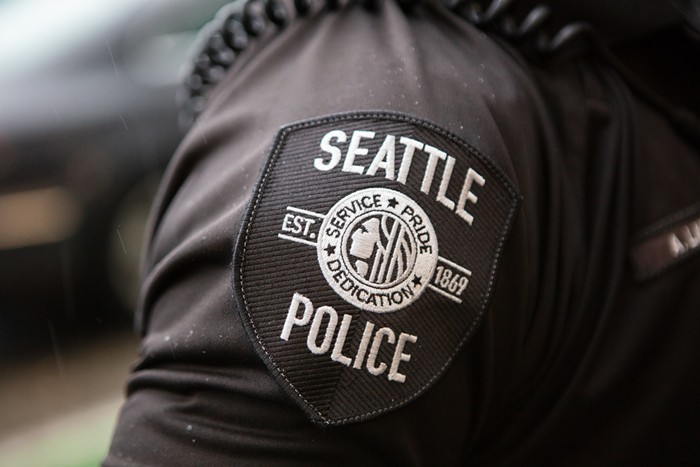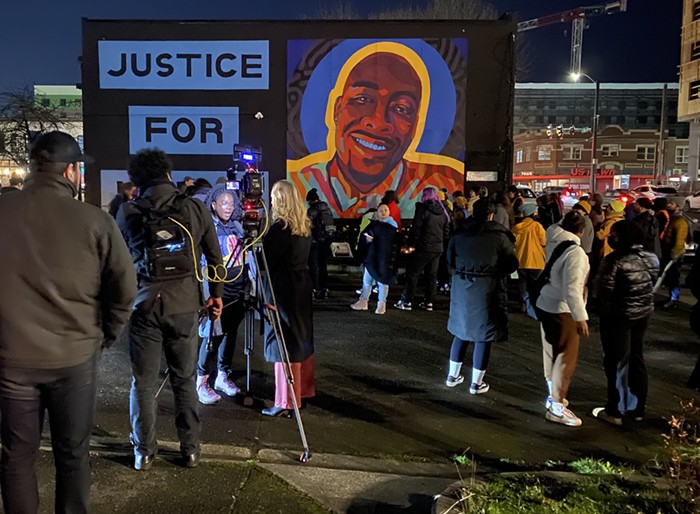
You're probably wondering what a Stingray is and what it does. The short answer? It's a briefcase-sized device that pretends to be a phone tower in order to suck up data from nearby cell phones. (USA Today calls the use of a Stingray "a method from the NSA's playbook.") Many police departments, in cooperation with the FBI, are using them across the country. SPD has denied using Stingrays, but a tranche of e-mails disclosed this week shows that last year, SPD detective Len Carver, in his capacity as an FBI task force member, wrote about the need to hide their use from the public.
The tranche of e-mails was disclosed this week in response to a records request by transparency activist Andrew Hendricks. Among the documents is a May 6, 2014 e-mail from Detective Carver about the need to "keep this sophisticated technique confidential."
The technique he's referring to is "law enforcement's use of the 'phone ping.'" The subject of the message is "Yesterday's Amber Alert"—likely a reference to a the capture, the previous day, of a woman who abducted her son and was tracked "by pinging the mother's cell phone," according to what the King County Sheriff's department told KOMO at the time.
In the e-mail, the technique of "pinging" a phone appears to refer to using a Stingray device (also known as an IMSI catcher) or some other Stingray-like device.
"By their very nature," Carver went on, "authority to use the tools (pings and tracking) must remain covert to be effective. Public disclosure of the technique could render this investigative tool useless." (The FBI has asked some departments to sign non-disclosure agreements about their use of the Stingray.)
In August, SPD told me the department has never used Stingrays. So why was an SPD detective e-mailing members of an FBI task force last May to remind them about the need to keep the use of Stingray-like methods secret?
I asked the police and the FBI. Detective Carver was speaking as an FBI task force member when he sent that e-mail, said SPD spokesperson Sean Whitcomb. "We do not use Stingray technology," Whitcomb said, reiterating the department's previous promise. "If that ever changes, there will be a very robust community discussion."
To be extra clear, Whitcomb said SPD is not using Stingrays, does not possess one, and isn't borrowing another agency's device.
Ayn Dietrich, a public information officer for the FBI's Seattle bureau, told me that authorities "use that technique when they're trying to locate somebody, whether it's a bad guy or a victim."
How exactly this goes down, she didn't explain. But the ACLU calls Stingrays "invasive phone surveillance devices" that "also gather information about the phones of countless bystanders who happen to be nearby."
According to Dietrich, the Stingray is only used to track down criminal suspects and missing victims. For example, she said, the device helped locate two girls from Snohomish County who went missing earlier this month.
"The understanding of it sweeping up large amounts of communications is vastly exaggerated," Dietrich said. "It's really pretty pedestrian."
Dietrich said Carver was reminding the members of the task force not to talk publicly about the use of Stingrays, "because it leads [criminals] to turn off their cell phones." Records show she forwarded his comments to the public relations sections of the police departments of Seattle, the Port of Seattle, Kirkland, Everett, Edmonds, Bellevue, Redmond, Tukwila, Renton, and Tacoma.
Last summer, transparency advocate Phil Mocek obtained documents showing that Tacoma police were using a Stingray. A local judge who'd been approving their use, it turned out, didn't have a clue as to the technology he was actually authorizing.


















